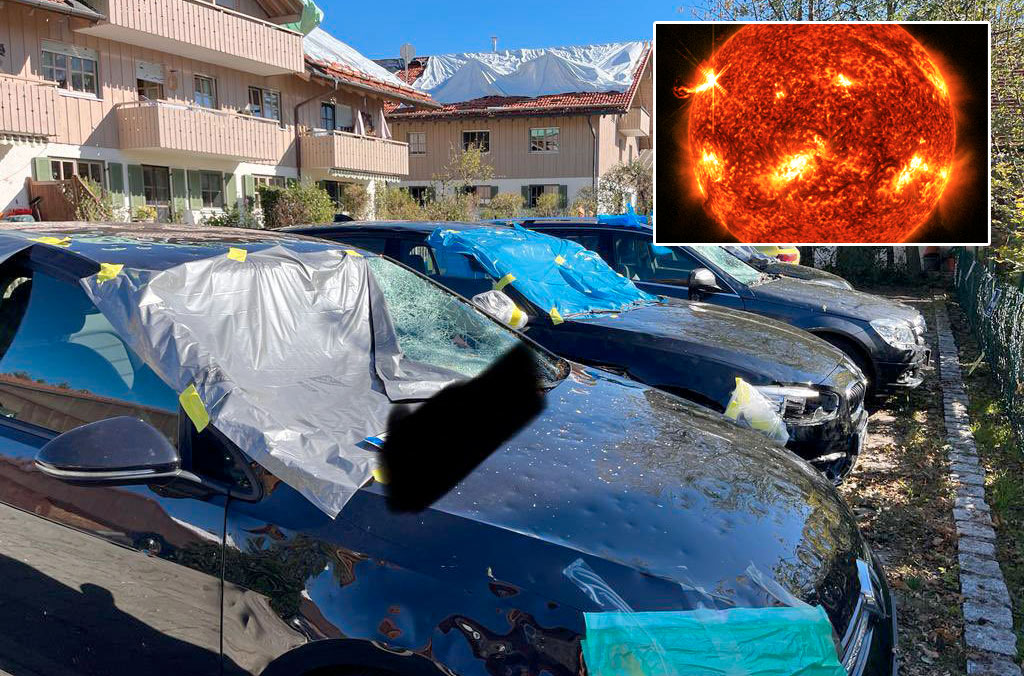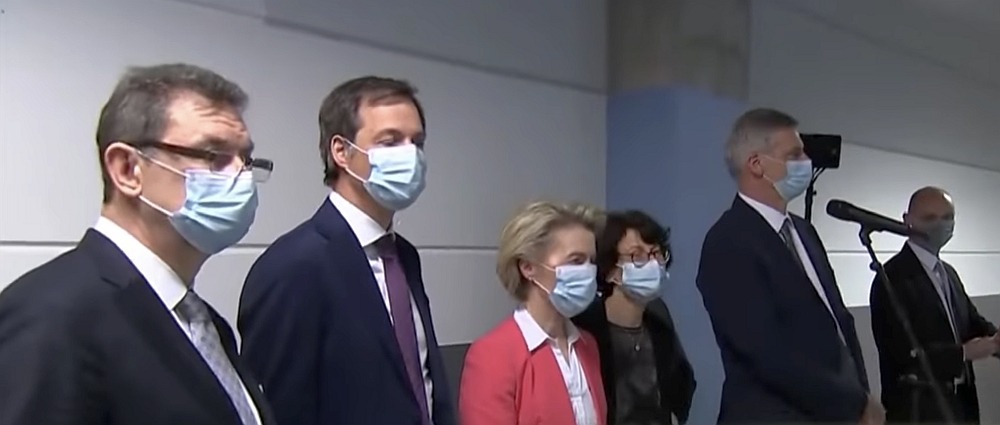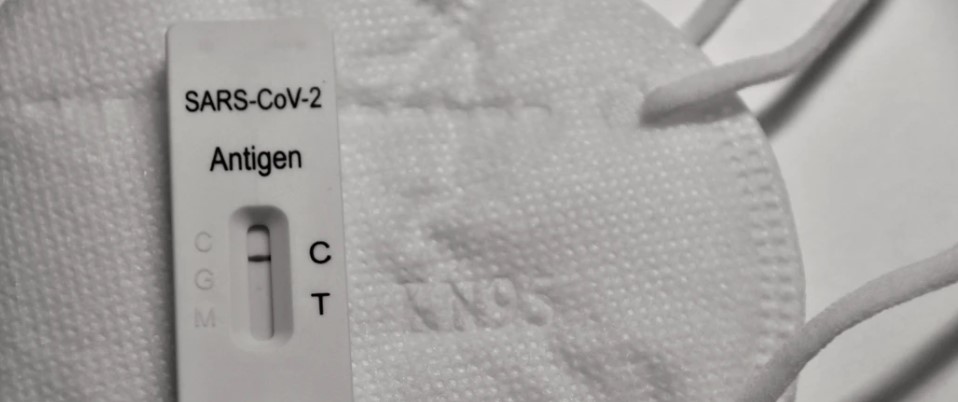WHO finally admits that PCR tests are unreliable
The World Health Organization has finally admitted in a memo from December 14, that high cycle thresholds on PCR tests for Sars-Cov-2 will result in false positives. The question is: Why only now?
Published: December 20, 2020, 8:30 am
This explosive information on the unreliability of PCR tests has been available for months. It is therefore curious that the WHO took so long to make such an announcement. Cynics argue that the WHO dragged their feet on purpose, because they wanted to make it appear as though vaccines actually work.
As FWM reported earlier, the design of the vaccine used false positive PCR results to boost its efficacy rate. Dr. Tommy Megremis had warned on Facebook: “The problem is in the false positivity if you will for the PCR test. If you are generally aware, the PCR test is used to amplify small amount of genetic material so as to recognize patterns of DNA by ‘cycling’. […] It works because if you amplify and cycle enough times to ‘grow’ legitimate DNA fragments, you get something with with a fair amount of specificity.
“What is becoming more and more apparent is that the PCR test was not designed as a diagnostic tool for infection, and really cannot function as one without having a huge amount of false positives, period. When it comes to Covid, the presence of viral particles picked up by the PCR technique does not and has not been quantitatively linked to an active ‘symptomatic’ infection. It simply cannot be so, because infection threshold as a result of viral load is different for each patient. It turns out, if you ‘cycle’ over around 25 times, the false positivity of Covid infection starts getting very high.”
The polymerase chain reaction tests (PCR) works by taking nucleotides – tiny fragments of DNA or RNA – and replicating them until they become enough in quantity to eventually identify.
The replication is done in cycles, with each cycle doubling the amount of genetic material. The number of cycles it takes to produce an identifiable gene is known as the “cycle threshold” or “CT value”. The higher the CT value, the more likely it is to test for the presence of Sars-Cov-2. Despite this, many governments and health officials have been relying on PCR tests to make far-reaching pronouncements.
According to the WHO: “Users of RT-PCR reagents should read the IFU carefully to determine if manual adjustment of the PCR positivity threshold is necessary to account for any background noise which may lead to a specimen with a high cycle threshold (Ct) value result being interpreted as a positive result.
“The design principle of RT-PCR means that for patients with high levels of circulating virus (viral load), relatively few cycles will be needed to detect virus and so the Ct value will be low. Conversely, when specimens return a high Ct value, it means that many cycles were required to detect virus. In some circumstances, the distinction between background noise and actual presence of the target virus is difficult to ascertain.”
Thus, any test with a CT value of over 35 is potentially meaningless. Dr Kary Mullis, the Nobel Prize laureate who invented the PCR process, has been adamant that was never meant as a diagnostic tool. Similarly, the MIQE guidelines for the use of PCR state: “Cq values higher than 40 are suspect because of the implied low efficiency and generally should not be reported.”
Therefore PCR tests will in future be done “under the new WHO guidelines”, running only 25-30 cycles instead of more than 35. This in turn, will result in the number of “positive Covid cases” plummeting, making it appear as if vaccines work.
Thus, after months of flooding the Covid data pool with false positives, miscounting deaths “by accident”, or adding “Covid-19 related death” on many death certificates, the WHO is now back-peddling on its claims.
All rights reserved. You have permission to quote freely from the articles provided that the source (www.freewestmedia.com) is given. Photos may not be used without our consent.
Consider donating to support our work
Help us to produce more articles like this. FreeWestMedia is depending on donations from our readers to keep going. With your help, we expose the mainstream fake news agenda.
Keep your language polite. Readers from many different countries visit and contribute to Free West Media and we must therefore obey the rules in, for example, Germany. Illegal content will be deleted.
If you have been approved to post comments without preview from FWM, you are responsible for violations of any law. This means that FWM may be forced to cooperate with authorities in a possible crime investigation.
If your comments are subject to preview by FWM, please be patient. We continually review comments but depending on the time of day it can take up to several hours before your comment is reviewed.
We reserve the right to delete comments that are offensive, contain slander or foul language, or are irrelevant to the discussion.

Swedish military wants to remilitarize the Åland Islands
The demilitarized autonomy has previously been known as 'the islands of peace.

NOAA Predicts Zero Sunspots for Almost the Whole 2030s
CLIMATEThe United States' government scientific organization, the National Oceanic and Atmospheric Administration (NOAA), predicts zero sunspots from 2031 to 2040. This is an extreme situation that has not occurred in as long as humanity has been counting sunspots, and it leads us into uncharted territory in terms of our solar system. However, this prediction aligns with the warnings of the world-renowned solar researcher Valentina Zharkova for many years, who indicated in 2019 various signs of this catastrophic phenomenon, including the extreme hailstorms we have seen in Europe and the world this summer. The forecast and various observations this year give cause for very significant concern. In this unique analysis, Free West Media explains why.

European Nationalist Parties Forge Cooperation Ahead of EU Elections
EUROPEAN ELECTIONSOn Saturday, August 26, representatives of six European nationalist parties gathered in Budapest. The meeting was initiated by the Hungarian party Mi Hazánk and took place in the national parliament. Representatives of the parties signed a joint declaration that not only reaffirms the parties' friendship but also their unity on a range of complex political issues. A surprisingly clear and radical manifesto was established. The hope is that this cooperation will lead to success in the EU elections and eventually result in the formation of a group in the European Parliament. For Swedish nationalism, this meeting marks a success as Sweden, for the first time, has a party represented in a leading nationalist cooperation in Europe. Free West Media was present at this historic event.

Turkey Believes Sweden Hasn’t Done Enough
Sweden will have to wait a bit longer for NATO membership, according to Turkey's Justice Minister Jilmaz Tunc. First, Sweden must extradite the "terrorists" Turkey wants and stop the desecration of the Quran.

Swedish Weapon Takes Down Russia’s Best Attack Helicopter
The Russian attack helicopter Ka-52 is considered one of the world's best and has struck fear in Ukraine, where it has hunted down tanks and other armored vehicles, often beyond the range of many light anti-aircraft systems. However, it has met its match in the Swedish air defense missile system RBS 70, which has quickly led to significant losses for the Russian helicopter forces.

Strong Confidence in German AfD
Alternative for Germany (AfD) held a party conference on July 29-30 to select candidates for the upcoming EU election next year. EU Parliament member Maximilian Krah, belonging to the party's more radical, ethnonationalist faction, was appointed as the top candidate. The party's two spokespersons delivered powerful speeches criticizing the EU's failed migration policy and trade sanctions that isolate Europe and Germany from the rest of the world. They argued that it's time for the EU to return a significant portion of its power to national parliaments. However, they have dropped the demand for Germany to exit the EU.

The Establishment Wants to Ban Germany’s Second Largest Party – for the Sake of Democracy
The rising popularity of AfD has raised strong concerns within the establishment. Despite lies and demonization in the media and isolation from the overall political establishment, the party continues to grow. Certain representatives of the party are accused of becoming increasingly "extreme," and in an unusual move, the influential weekly newspaper Der Spiegel demanded that AfD be "banned."

Dutch FvD break through the media blockade
What is happening in the Netherlands? It is often difficult to follow events in other countries, especially when distorted by system media. We give Forum for Democracy (FvD) the opportunity to speak out on the political situation in the Netherlands and the staunch resistance they face in trying to save the country.

The Ursula von der Leyen Affair
After a criminal complaint in Belgium against the President of the European Commission, the so-called SMS-case, now takes a new turn. The judge responsible for the investigation will likely gain access to the secret messages exchanged between Ursula von der Leyen and Albert Bourla, CEO of Pfizer, at least if they haven't been deleted.

Publisher of Unique Literature Worldwide Blocked by International Distributor
Arktos has distinguished itself by publishing groundbreaking philosophers and social critics. Now, the publisher's international distributor has abruptly terminated the cooperation, and more than 400 already printed titles cannot reach their audience. There is strong evidence that the distributor has been under pressure, something that has also happened in Sweden. We have spoken with Arktos founder Daniel Friberg about the ongoing struggle for freedom of speech in a shrinking cultural corridor.

